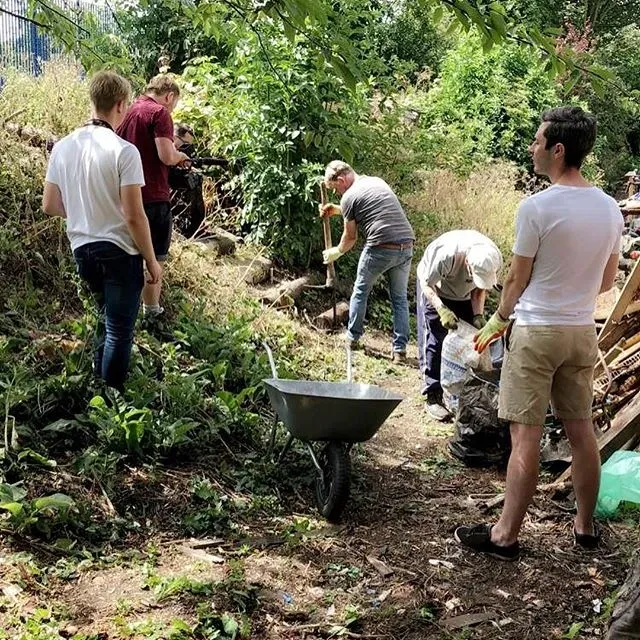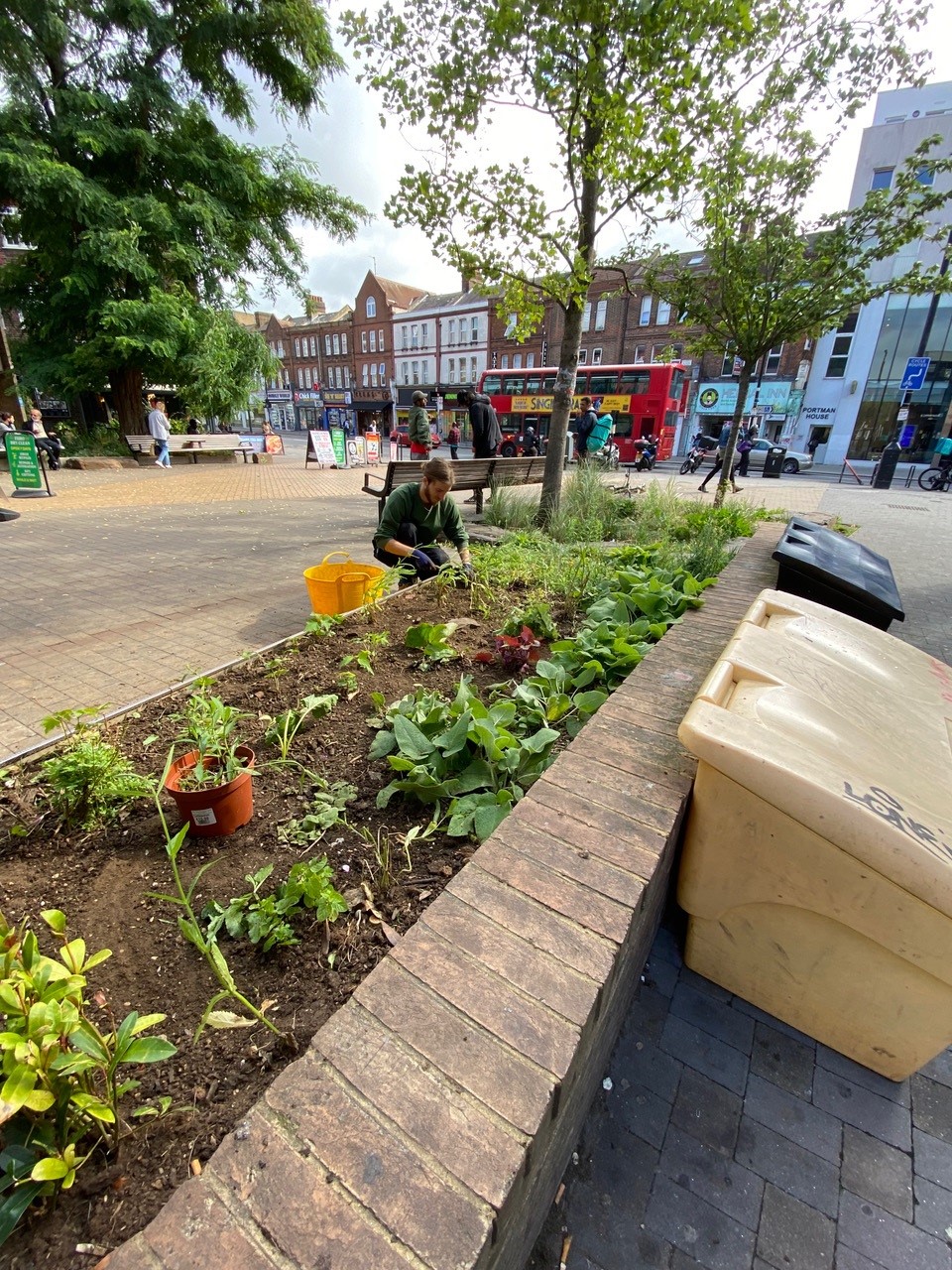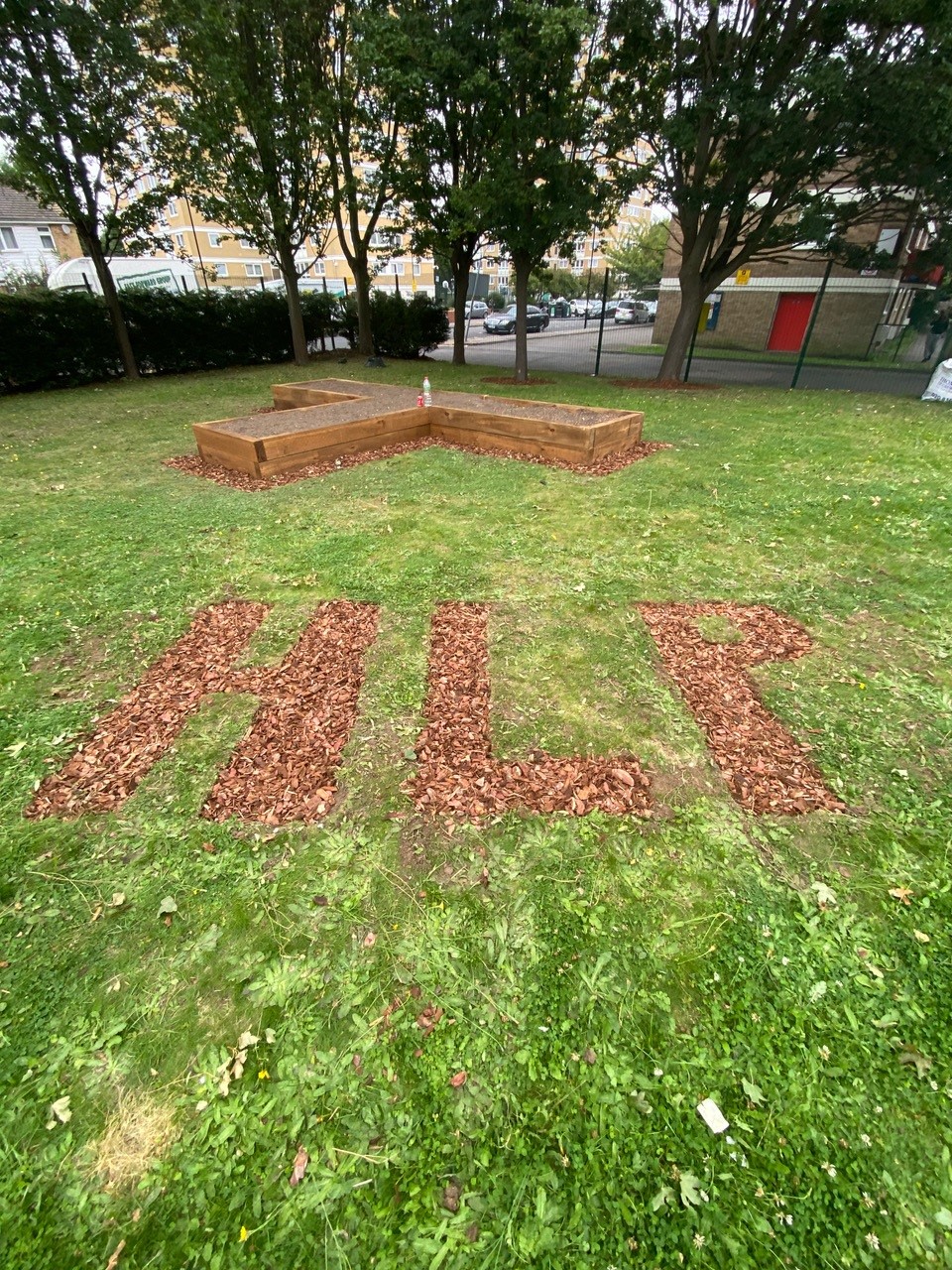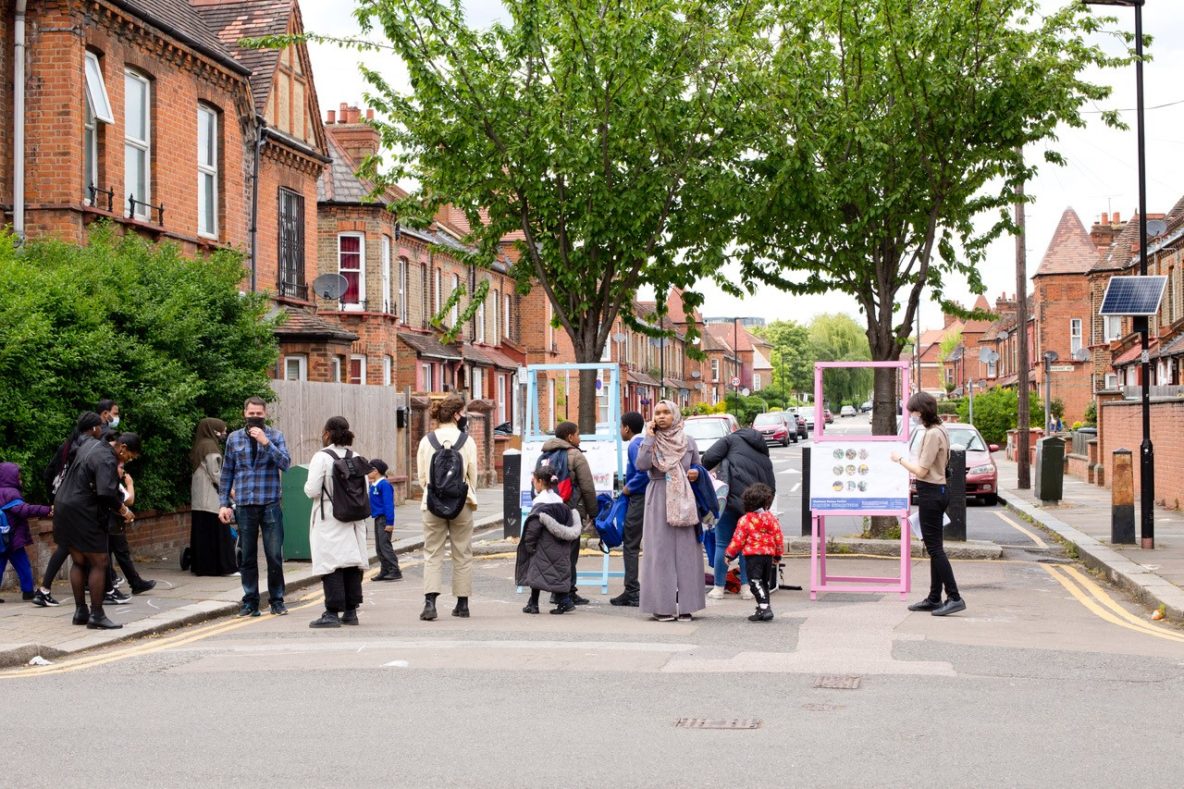STORIES: GrowN22
Greening your neighbourhood with GrowN22
This summer showed how heavy rainfall can cause flooding across London. Climate change is likely to intensify this problem. Working for a climate-proof and sustainable environment also happens locally. Being familiar with the planning system can help you get your council to plan for environmental sustainability and mitigate the impacts of climate change. And while the council acts, you can start your own project. Luke Newcombe tells us how GrowN22 is working for a greener Wood Green.
By Louise Virrey, volunteer Planning Aid for London
Working to benefit the public, GrowN22 revives neglected land into green and vibrant spaces for the community of Wood Green, Haringey. Inspired by and in partnership with London National Park City initiative, Luke Newcombe founded GrowN22 in 2019. He is part of a much wider movement of Londoners making London’s public spaces greener, wilder, and healthier.
Take a look at Haringey’s first Parklet: Gladstone Parklet Project. This project will transform an unused section of a road, adjacent to Noel Park School, into a multifunctional community space. In two months you can see the result: the Parklet is due to be installed in March 2022, funded by the Mayor of London’s Grow Back Greener fund. Together with Future Wood Green Business Improvement District (BID), GrowN22 has transformed the grounds of Wood Green Library into a colourful wild garden. Each plant represents a different section of the diverse community of Haringey. There is also the Westbury Banks Nature Reserve, a Noel Park Big Local initiative. GrowN22 developed the reserve, which the Friends of Westbury Banks Nature Reserve now manages. Owned by the Highways Department at Haringey Council, this formerly abandoned plot along Westbury Avenue N22 was a fly tipping hot spot for over a decade. Now it’s flourishing with greenery and wildlife. GrowN22 has also enhanced the balcony planters at Wood Green Library, installed a rooftop fernery at The Mall Wood Green, and is in the middle of creating a wildlife garden at Haringey Learning Partnership. Luke tells us how it’s done.

Students from Noel Park School discussing a potential design for the Gladstone Parklet Project.

Volunteers gardening at the Westbury Banks Nature Reserve.
Setting up your own community garden
Where do you start? GrowN22 first identifies potential sites. Using the HM Land Registry, you can identify who owns or manages the land. Next, building a positive relationship with the landowners, for example the council, can make you a credible partner for a project. Having been active in Haringey for several years has helped GrowN22 obtain permission from the council to work on land owned by the Highways Authority.
Once the council has granted permission, you have to source funds to cover costs. To be eligible for funding applications, you need to write a constitution or set up a committee: GrowN22 set up the Friends of Westbury Banks Nature Reserve (FoWBNR). The committee is independent and helps with the masterplan for the reserve. They also review the visitors’ activities and help decide how funds are allocated. The committee members share different tasks, so the work is manageable. Getting people involved with different skillsets makes your committee more effective. Equally important is setting clear aims and objectives for yourselves. This helps you communicate your plans to the council or potential funders, to obtain permission and funding for projects.
Westbury Banks Nature Reserve received funding through the Noel Park Big Local programme in 2017. Ground Work London also provided funds to construct the pond and the signage in the nature reserve. GrowN22 also applied to the Mayor of London’s Grow Back Greener Fund. To access the funding, GrowN22 registered as a Community Interest Company (CIC). This is a form of social enterprise that benefits the local community.
Getting the people involved
Getting people involved is key. GrowN22 takes a collaborative approach and invites the local community to join. This leads to the most creative and exciting projects: the Parklet came about after GrowN22, Jan Kattein Architects, Haringey Council and Noel Park Primary School worked with students to design the small park. If you want to address the needs and wants of everybody, it’s important you get different parts of the community involved.
To do so, GrowN22 is active on social media: on Instagram they provide a virtual tour of the Westbury Nature Reserve, and Twitter showcases new projects and upcoming workshops. Having face-to-face conversations within your local community is equally important.
For each project, residents, small businesses, schools and other institutions join to help with planting, weeding, and watering the plants. During two workshops each month, participants help with the maintenance of Westbury Banks Nature Reserve.


Lawn art for Haringey Learning Partnership (HLP)
Benefits of local green space and community gardens
Knowing the benefits of community gardens and local green space can help you build a convincing case. GrowN22 has drawn on the research underlining the positive impacts of its projects. Like many areas in London, not everybody in Wood Green has access to high quality green space. Local community gardens help give everybody access to gardens and nature near their home. The health benefits of this are clear. Not only does more available green space help people get outside and become more active. Small green spaces can also affect the mental health of citizens, by reducing stress, anxiety, and depression. Having an active street life also makes a place safer. And getting involved with the management of derelict land enables communities to influence what their local area looks like. This creates a shared local identity.
As Haringey Council is looking to improve air quality and become zero-carbon by 2050, one solution is using small plots of land for green spaces. Most councils in London have set similar targets. This can be a persuasive argument when asking the council to collaborate on a project. Other issues that climate change causes, such as the Urban Heat Island (UHI) effect, can also be partly resolved through more green spaces. This does not only benefit humans: a healthier ecosystem allows different species to have a home in London. Bringing the evidence together and identifying a need within your area help you build your case. You can use open access data on air pollution, access to green space, and public health to support this.
Across London communities take action to make their area greener and healthier. GrowN22 offers many examples of what you can do. The environmental and social benefits that these projects bring are clear. The next step is to think long-term: how can councils better support this work? To have influence over the creation of new green spaces in the borough, you need to get involved with the development of your Local Plan. New housebuilding or other forms of development in the area can be a source of funding. Many councils require that new development includes green space and contributes to the local natural environment. Knowing your local planning policy, and getting the evidence, helps you build your case for further change. But don’t forget to look for opportunities around you: GrowN22 shows that you can take action now to make your area greener for the future.


